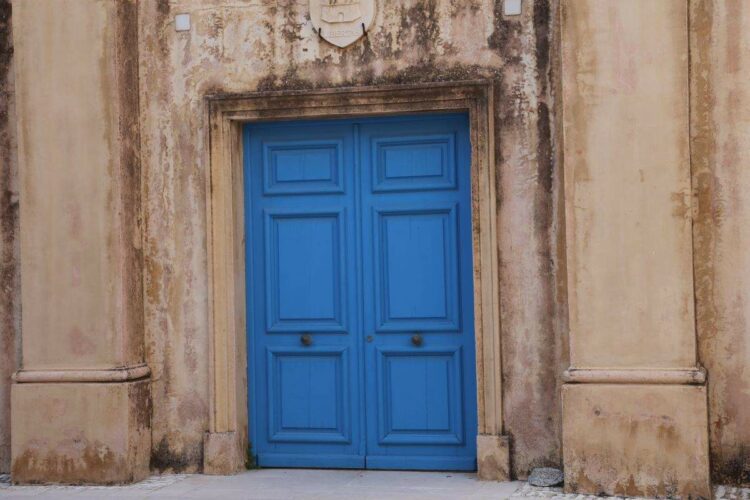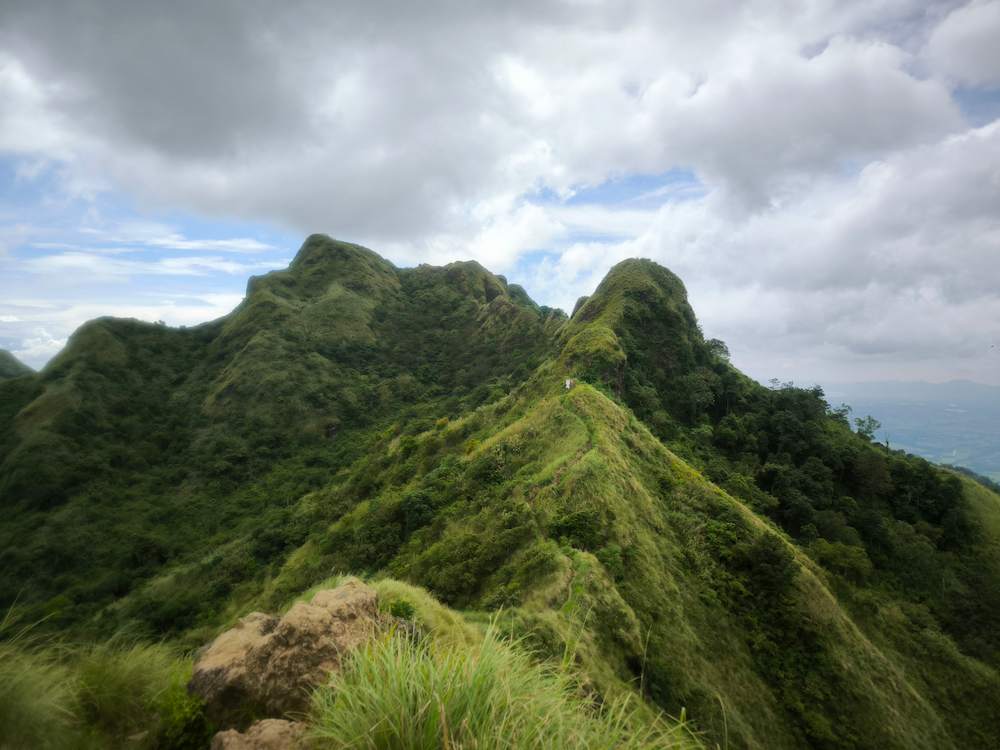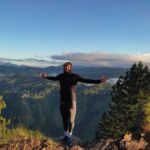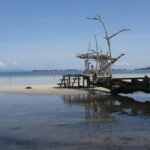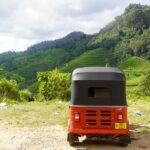Holiday in Corsica
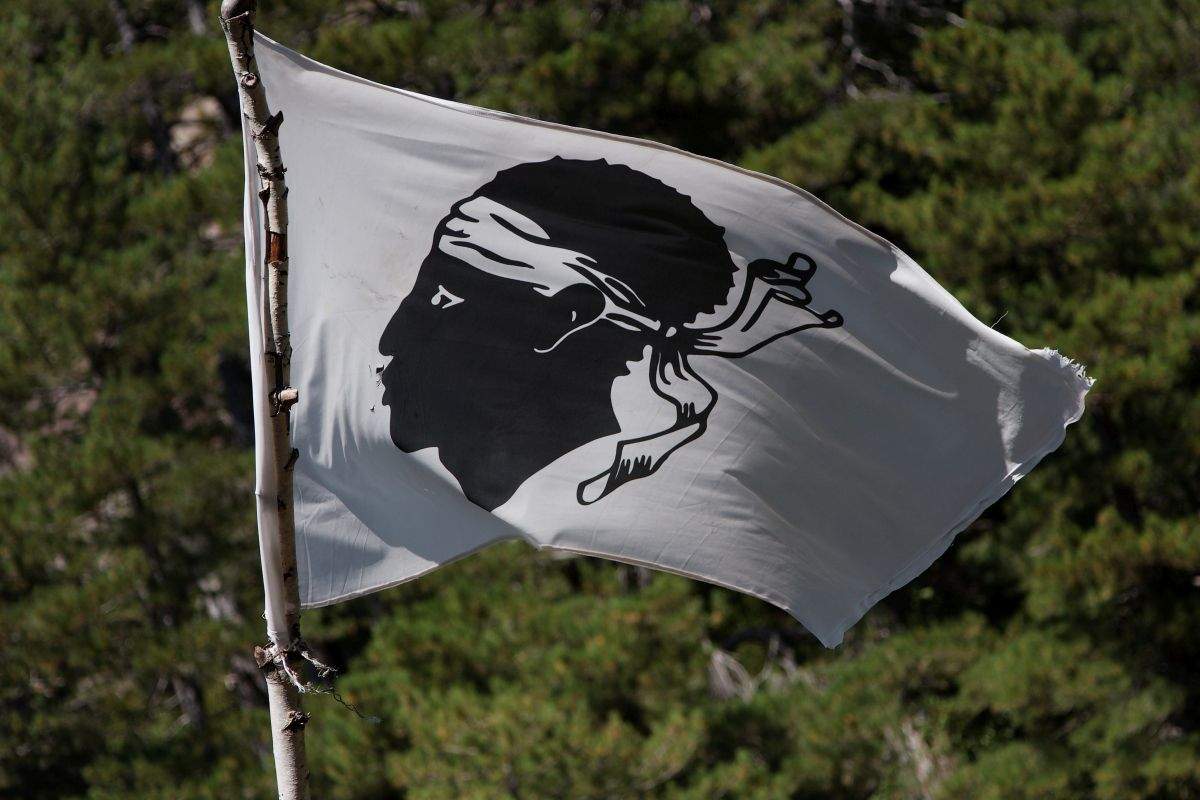
A holiday on Corsica sounds far less exotic compared to our other travel destinations. It’s not for nothing that the island is one of my absolute favourite travel destinations. Find out why in this article! With a little imagination, the outline of the island is reminiscent of a “thumbs up”. On Corsica, you can expect gorgeous beaches, great food, breathtaking hikes and idyllic villages and small towns. Corsica is also known as the birthplace of Napoleon Bonaparte and for its recurring independence battles.
The island of Corsica belongs to France, although geographically it is much closer to the Italian mainland. Only a few kilometres south of Corsica is the island of Sardinia, which belongs to Italy. Corsica has about 340,000 inhabitants, of whom about 70,000 live in the capital, Ajaccio. With 8,700 km², Corsica is a rather manageable holiday destination. Nevertheless, the island seems much larger. This is mainly due to the fact that Corsica is criss-crossed by mountains, which makes the journey by car somewhat arduous. The highest mountain is Monte Cinto, which is 2706m high. Corsica is ideal for families, couples or outdoor enthusiasts.
Top 8 highlights for your holiday in Corsica
As I have already written, I have been to Corsica a few times so far and have tried to put together my highlights. Apart from Ajaccio and Bastia, almost all places are worth seeing in my opinion. Unfortunately, I haven’t been to Porto in the last few years, which I remember as being super great. Unfortunately, I no longer have enough first-hand information to write about it.
1 Hike to Lac de Melo and Lac de Capitello
One of my absolute favourite hikes is the hike to the two lakes Melo and Capitello. Corté is the best starting point for this hike. There is a transfer from Corte to the Bergerie de Grotelle (the starting point of the hike), but if you are travelling with your own car, you can of course also take it to the starting point. The path leads past another Bergerie, great swimming pools or grottos, up to the first lake, past cows to Lac de Capitello. If you reach the first lake before the sun has fully risen, you may not notice it directly, as the lake knows how to hide behind its reflection.
[ngg src=”galleries” ids=”46″ display=”basic_thumbnail”]2 Hiking in the Col de Bavella to the “Trou de la Bombe
The Col de Bavella is a mountain pass in the southern third of the island. A good starting point for a visit to the Col de Bavella is the small village of Zonza, which leads towards the Col de Bavella on the D268. The Col de Bavella is also easy to reach from Porto-Vecchio. At the top of the pass, the paths of many different tourists cross: hikers, cyclists, families with children, climbers and the hardy GR20 hikers who cross the island from north to south. The area is particularly known for 2 hikes: The charismatic hole in the rock, the “Trou de la Bombe” (French for bomb craters) and the visit to the towers, also called the Dolomites of Corsica. The hike to the Trou de la Bombe is also ideal for families with children. After about 1-1.5 h you already reach the rock hole. The last part of the hike is a bit cracking but easily doable.
[ngg src=”galleries” ids=”47″ display=”basic_thumbnail”]3 Corte Old Town and Citadel
Far inland is the old town of Corte – at the confluence of the Restonica and Tavignano rivers. Even though a visit to Corte and the hike to the lakes Capitello and Melo inevitably belong together, they are still two completely different highlights for me. The old town of Cortes is situated on a high plateau and has a rather cosy flair. Small boutiques and restaurants are lined up next to each other, the older Corsicans sit in plastic chairs on the street and chat or play cards. The citadel is also worth a visit. There is also a nice hike from here.
[ngg src=”galleries” ids=”48″ display=”basic_thumbnail”]4 Bonifacio
In an absolutely spectacular location is the town of Bonifacio at the southern end of Corsica. The eroded limestone or sandstone rocks present the town as if on a platter. The town is divided into 2 parts – the old town and the harbour area. The two parts are connected by a long, wide staircase. The old town is undoubtedly the most spectacular part of the city. There is also a great walk along the cliffs to a lighthouse with a great swimming bay along the way. Be sure to bring plenty of water and sunscreen for the hike, as shady spots are few and far between along the entire walk. Fish lovers will also get their money’s worth in Bonifacio. Most restaurants specialise in preparing delicious fish dishes with the freshest aquatic animals. It should be said that the town is very touristy and many fancy people like to show themselves off, especially in the harbour area. Nevertheless, Bonifacio is an absolute must-see during your holiday in Corsica.
[ngg src=”galleries” ids=”49″ display=”basic_thumbnail”]5 Climibing Monte Cinto
Climbing Corsica’s highest mountain at 2,706 m is a bit of a challenge. You usually start in Lozzi or the Refuge de l’Ercu (a car with four-wheel drive is required). The hike is one of the most demanding in Corsica. You should allow a total of 8-10 hours for the entire hike. If you start at the Refuge de l’Ercu, you save about 2 hours. The Refuge de l’Ercu also offers overnight accommodation if you are too exhausted or want to start particularly early in the morning. It is important for the ascent of Monte Cintos that you remember the route (it is best to read the GPS data in Mapsme beforehand), as it is easy to lose your way in the scree. However, I have to say that I did Monte Cinto in 2006 when I was 14 years old. In general, I assume that the climb itself hasn’t changed much.
[ngg src=”galleries” ids=”52″ display=”basic_thumbnail”]6 Golf of St. Florent
If you arrive in Bastia and want to go straight to the beach, St. Florent is a good place to start. The drive to St. Florent takes about 40 minutes. I myself recommend a camping site outside the town by the sea. One camping site I always recommend is “à Stella”. The facilities are rather làlà, but it’s right by the sea. There is no barrier between the campsite and the pebble beach. If you want a sandy beach, you can find it by walking 5-10 minutes to the right along the beach.
[ngg src=”galleries” ids=”50″ display=”basic_thumbnail”]7 The beach of Palombaggia
Probably the most beautiful beach in Corsica is located in the south-east of the island, a few kilometres south of Porto-Vecchio. Turquoise water, white sandy beach together with the lush green of the mighty pine trees exude a Caribbean flair with a Mediterranean touch. The beach is accessible both by public transport from Porto-Vecchio and by private car. The bus leaves just above the harbour. It also stops at some campsites along the way. As you can imagine, you won’t be alone here. Almost every tourist wants to see this beach and swim in the shallow lagoon. Here you simply have to block out the thousands of tourists, otherwise you can’t really enjoy the beach.
8 Plage d’Ostriconi
If you prefer a rougher sandy beach, the Plage d’Ostriconi is the place for you. Here, compared to the rest of the island, there are waves and there is often a stronger wind. There is often a bathing warning. Directly at the Plage d’Ostriconi is a camping site called the “village d’Ostriconi”, which offers almost everything you need. I prefer smaller, more manageable sites, but this site is ideal for families with children, for example. There is a bar, a pool, a shop, a scooter rental, lots of children and a restaurant. The prices of the restaurant are fair, but I strongly recommend eating outside or cooking yourself, as the food is really poor by Corsican standards.
[ngg src=”galleries” ids=”51″ display=”basic_thumbnail”]What you should know before your holiday in Corsica
- Corsica is expensive, especially if you don’t arrive with a tent
- Get your ferry ticket early, sometimes you can get one for 10 €
- Good souvenirs are Corsican wine, Corsican cheese, meat products and chestnut products
- Check your car/motorhome thoroughly beforehand. Garage appointments are rare, especially in the high season, and sometimes have a lead time of 2 weeks.
Itinerary through Corsica
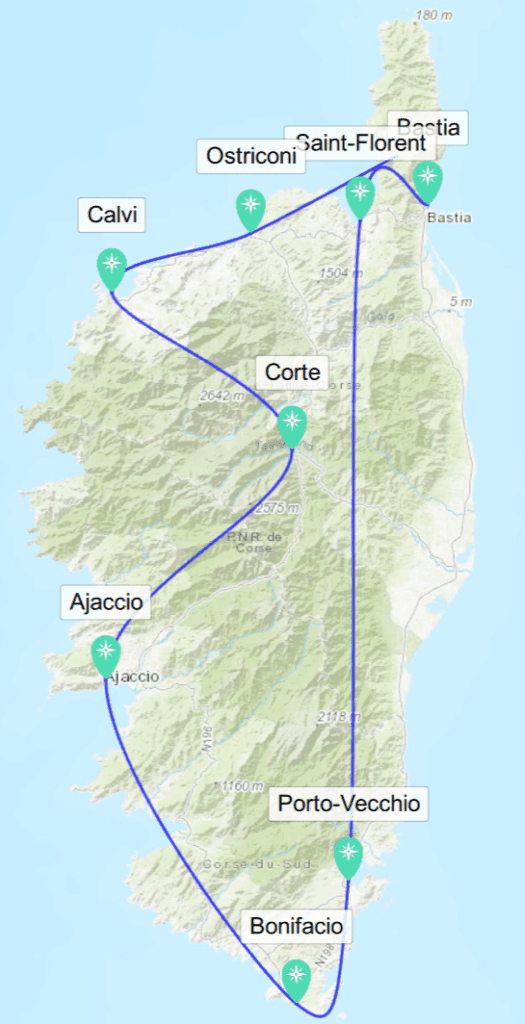
Recommended route on arrival in Bastia
Here is a suggestion on how you can organise your holiday in Corsica. Since our car broke down on the way, we had to rely on hitchhiking, bus and train from the first week.
Day 1-5: Continue from Bastia to St FLorent: walk along the Gulf, stroll in St Florent and enjoy the beach
Day 6-9:Porto-Vecchio (Hiking in Col de Bavella, Plage de Palombagia)
Day 10: Bonifacio
Day 11: Drive to Corte with a short stop in Ajaccio
Day 12-16: Hiking, old town, citadel, enjoying the calm and peaceful environment
Day 17-19: Calvi
Day 20-22: Ostriconi
Day 23: Departure from Bastia
How to get to Corsica
As always, there are various ways to get to the dream island. However, there is one thing you have to take care of before your holiday in Corsica – a ferry or plane ticket!
With your own car
If you have your own car, I recommend this way of travelling. On the one hand, you can of course take all your camping equipment with you and share the fuel costs with any passengers (be sure to study the Corona restrictions of the individual countries beforehand). The disadvantage, of course, is the cost of the vignette and tolls. If you have a car that doesn’t give you the most reliable impression, you should definitely check everything again beforehand. Getting a repair appointment in Corsica is definitely not easy. The route from Germany to Livorno, Genoa or Nice is also highly recommended. We usually leave from Livorno and make stops in Switzerland or Italy. Basel, Lucerne, Lugano, Milan and Pisa are all places that are definitely worth a visit. The ferry ticket for the two of us, including the car, cost €180 round trip.
[ngg src=”galleries” ids=”53″ display=”basic_thumbnail”]By plane
Those who particularly value comfort can of course also fly to Corsica by plane. There are some direct flights, e.g. from Cologne to Bastia, for relatively little money. Other airports are in Ajaccio, Calvi and Figari.
By public transport
Another option is to combine public transport with a ferry. This is probably the most expensive option but also much more environmentally friendly than flying. There are trains and buses that connect various cities in Germany with Livorno. Flixbus, for example, offers the possibility to take your bike with you.
Transport for your holiday in Corsica
I can now report on this in the best possible way, as we had the pleasure, more or less involuntarily, of using all the usual means of transport. We arrived with our own car and left by plane, as our car simply didn’t want to go on. The diagnosis was a defective alternator, which we had to wait 9 days for, only to be told that the repair would take another 10 days. So if you are on the island with your own car during the high season, you should check it thoroughly beforehand.
Hitchhiking:
The cheapest way to get from A to B is and remains hitchhiking. The Corsicans, but also other tourists, are happy to give you a lift. We have covered several distances on Corsica and can highly recommend it. You should always keep in mind that there is a certain risk involved – but my experiences so far have been exclusively positive (but I am also a man). We hitchhiked from Porto-Vecchio to Bonifacio and back, from Porto-Vecchio to Ajaccio, from Calvi to Ostriconi and from there to Bastia.
Bus:
There are also some bus lines in Corsica that connect the “big cities”. There are also connections to the respective airports.
Train:
A great experience is the journey by train. The train runs from Ajaccio through the interior via Corte to Ponte-Leccia, where the route forks towards the east or west coast. In the east, the route leads along the sea to Calvi via île Rousse and in the west to Bastia. The route is super pleasant and the scenery is very impressive. As the departure times can change quickly, here is the link to the timetables.
The best time for your holiday in Corsica
To be honest, I find this question difficult to answer. The high season on the island is in the months of July and August, so the prices for accommodation rise accordingly and the beaches are well frequented. Many tourists from France, Italy, Germany and the BeNeLux countries spend their summer holidays here. In my opinion, the best time to travel is autumn, as the weather is still warm, the crowds have reduced considerably, the sea has not yet cooled down and the sunshine is no longer quite so intense to explore the mountains of Corsica.
[WPSM_AC id=6986]


